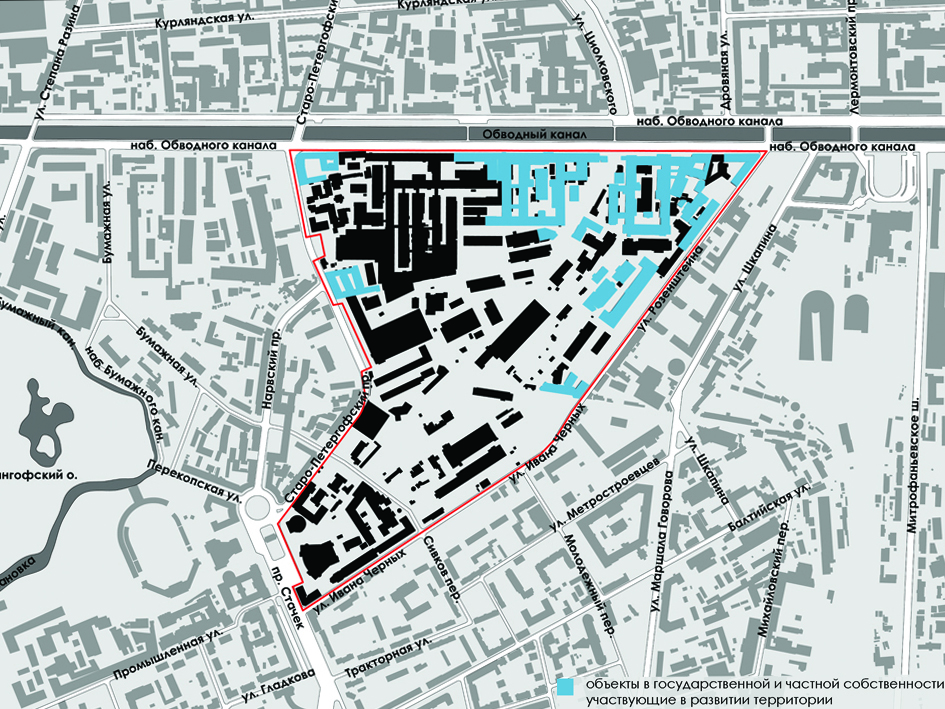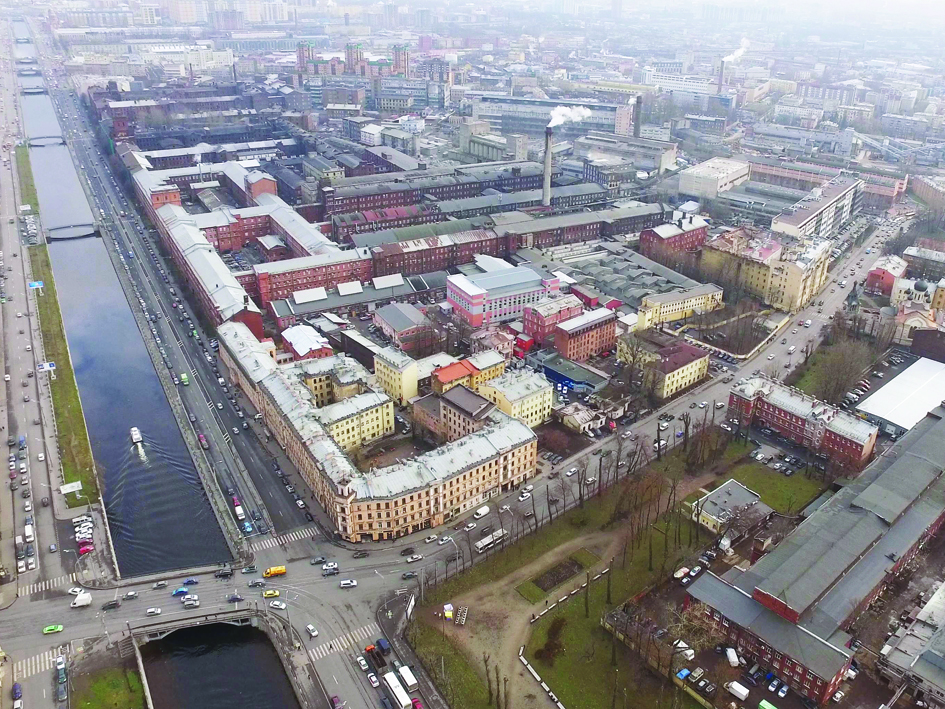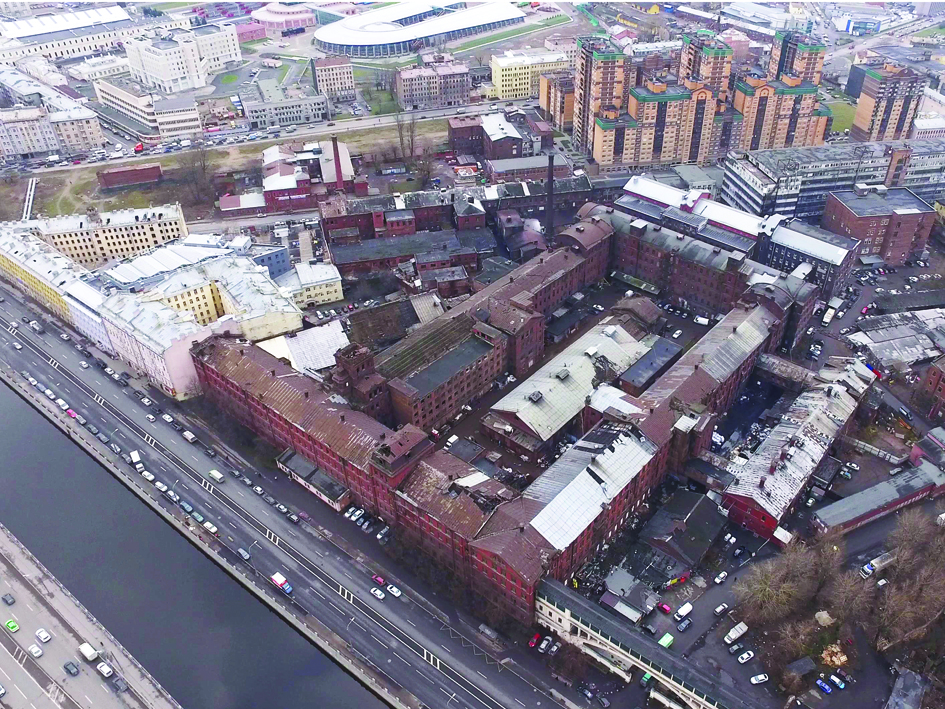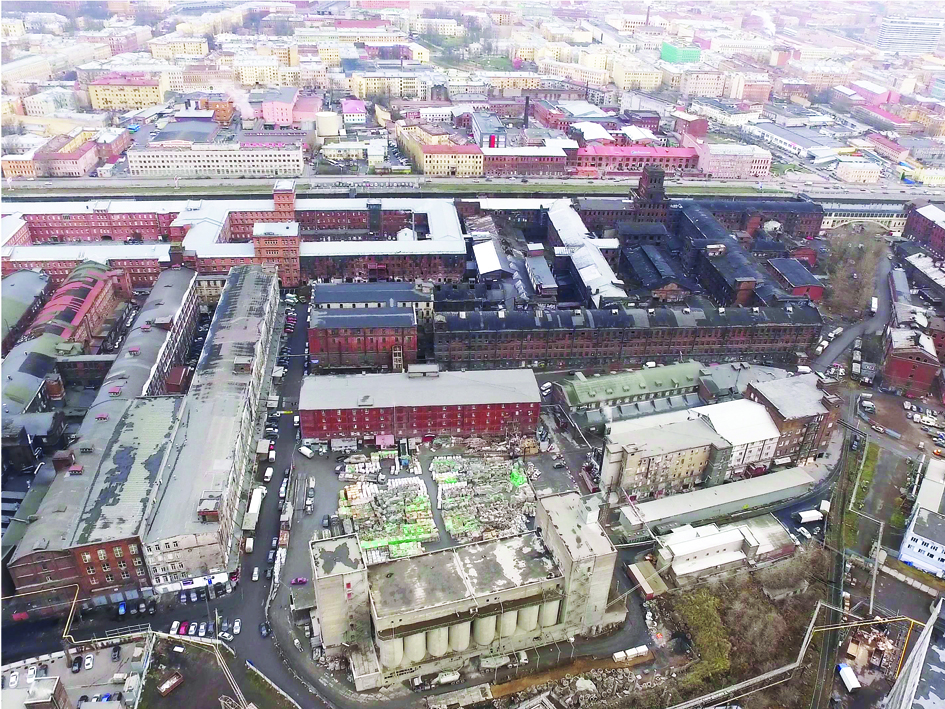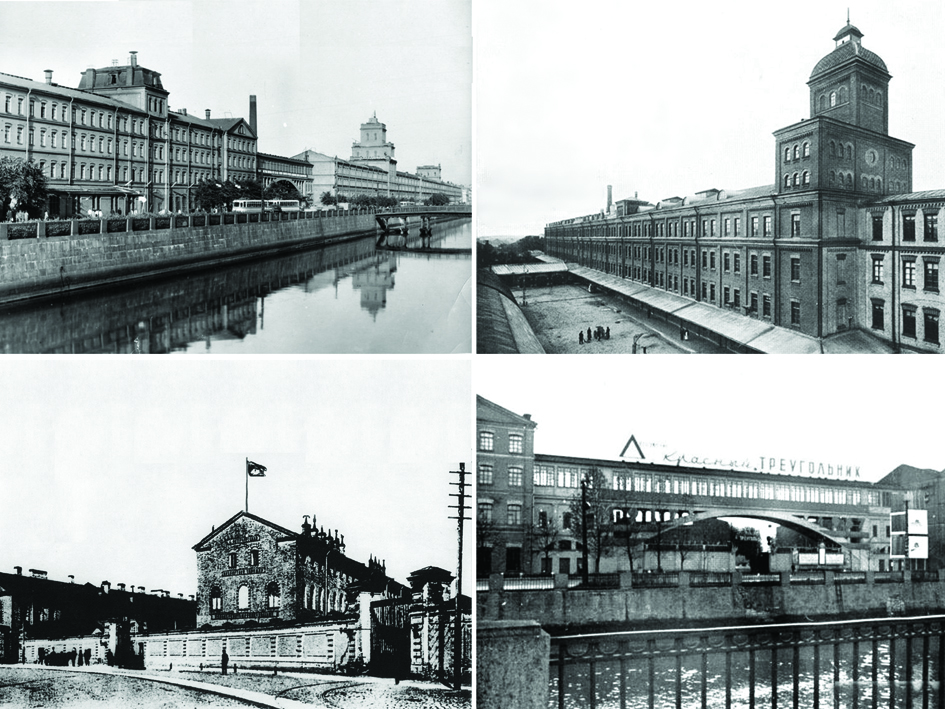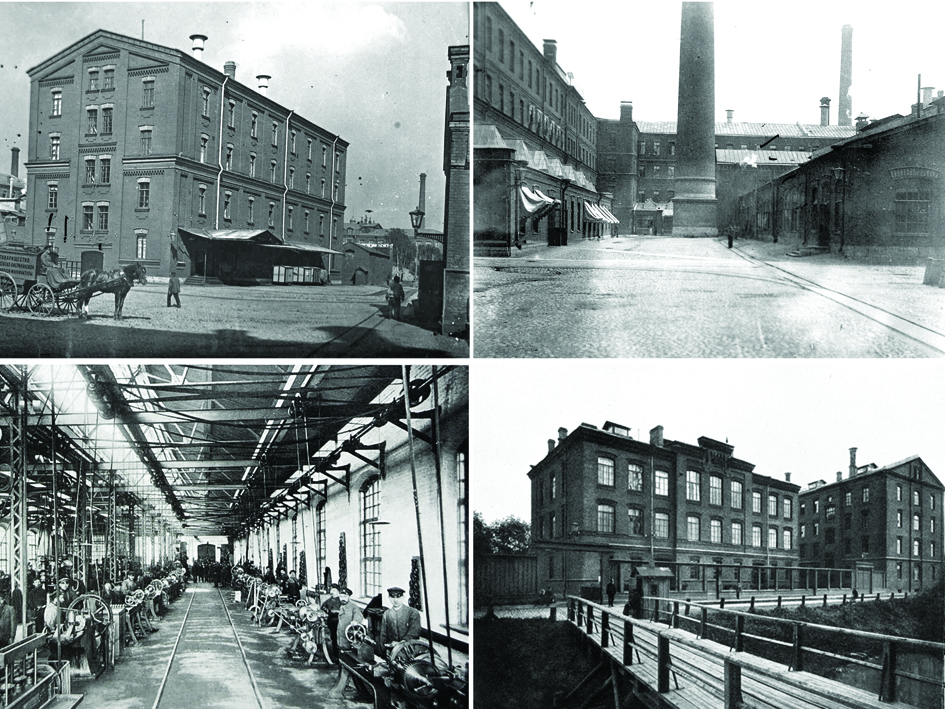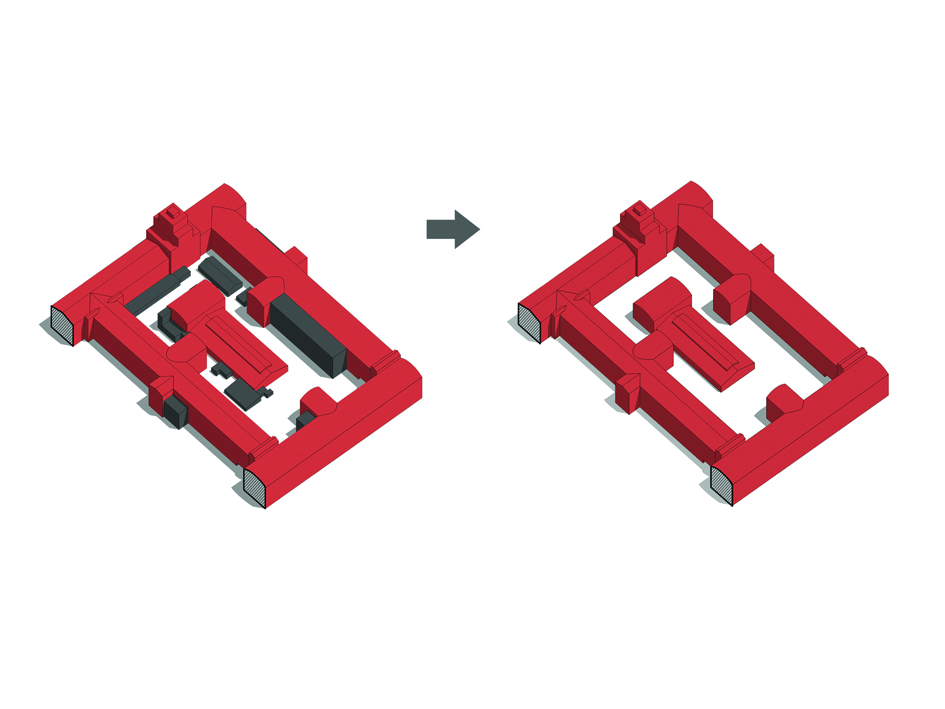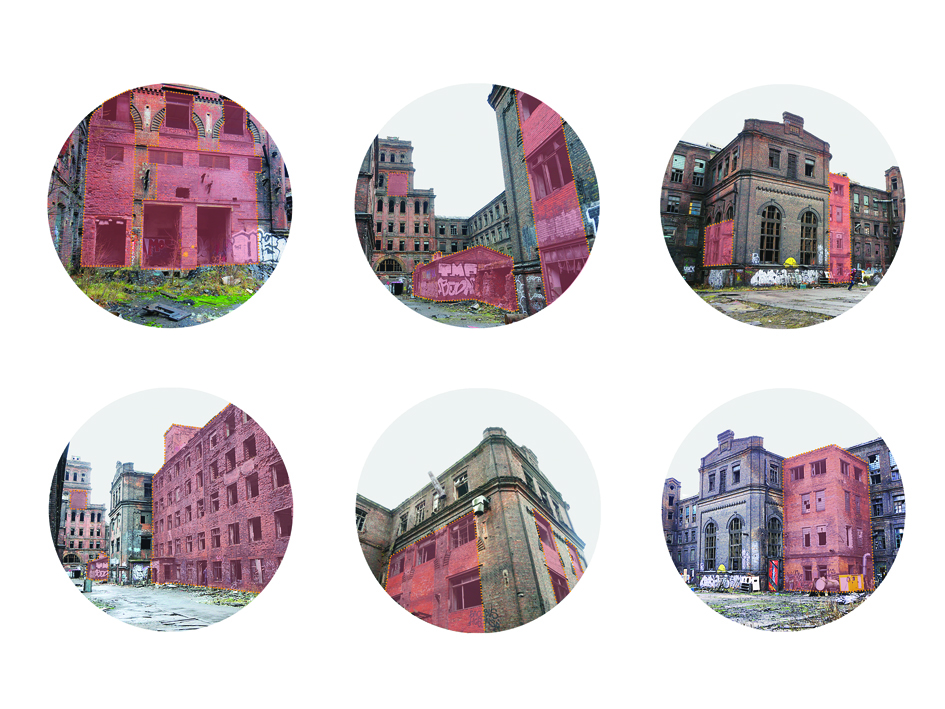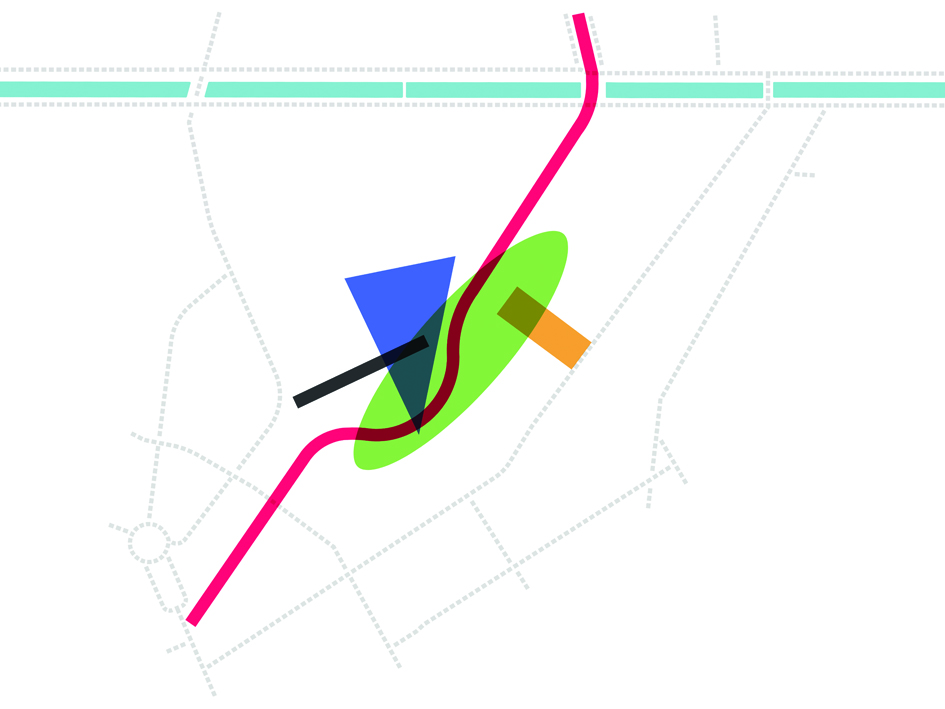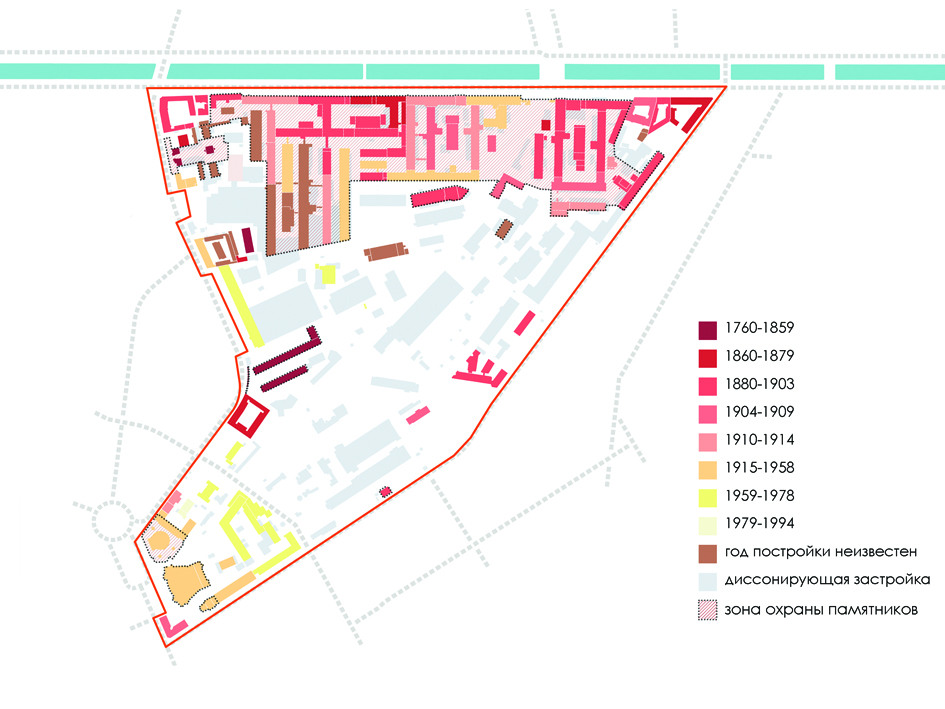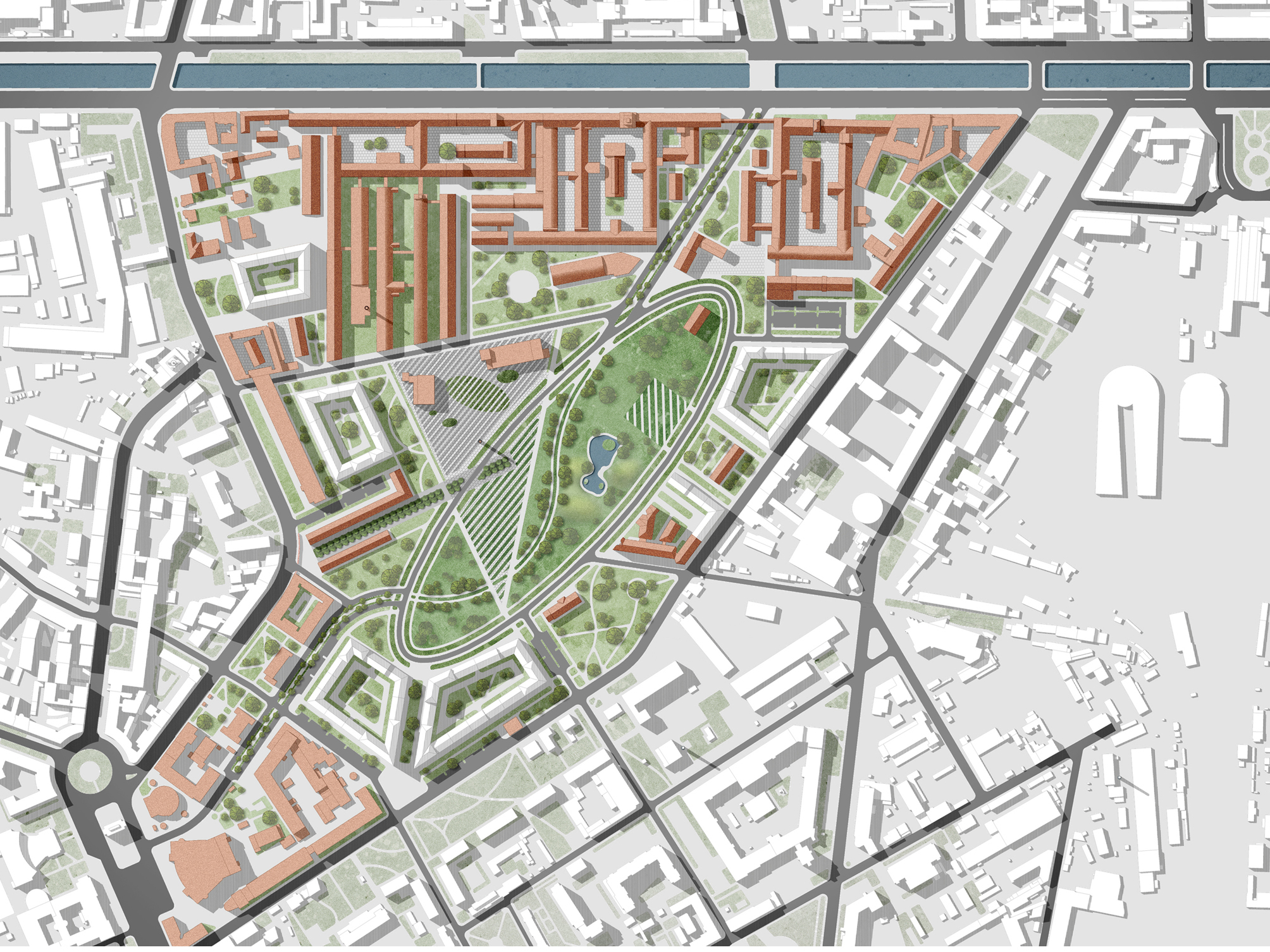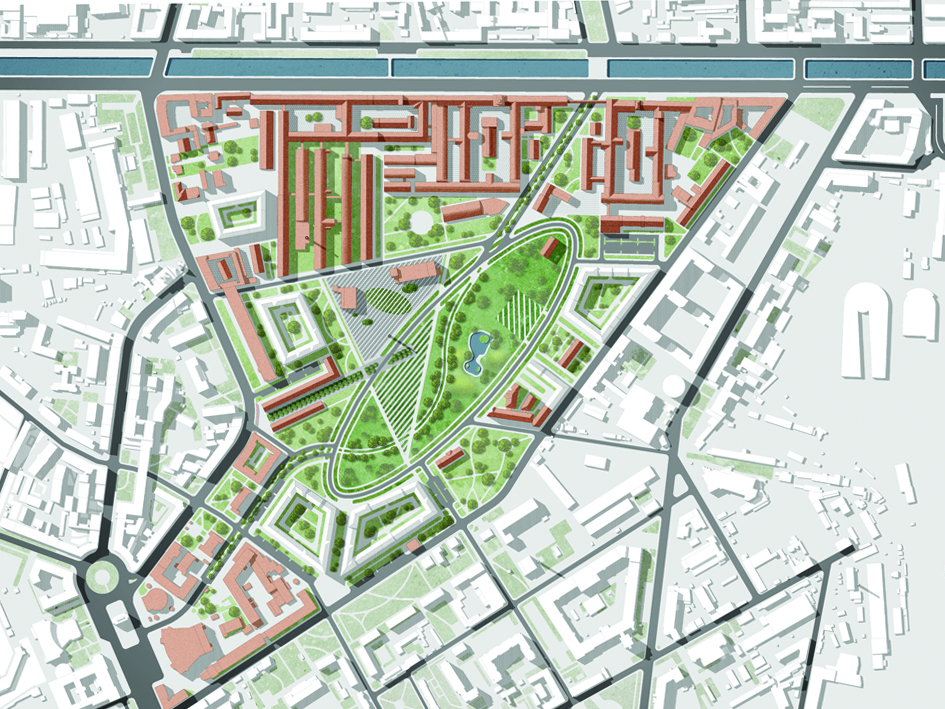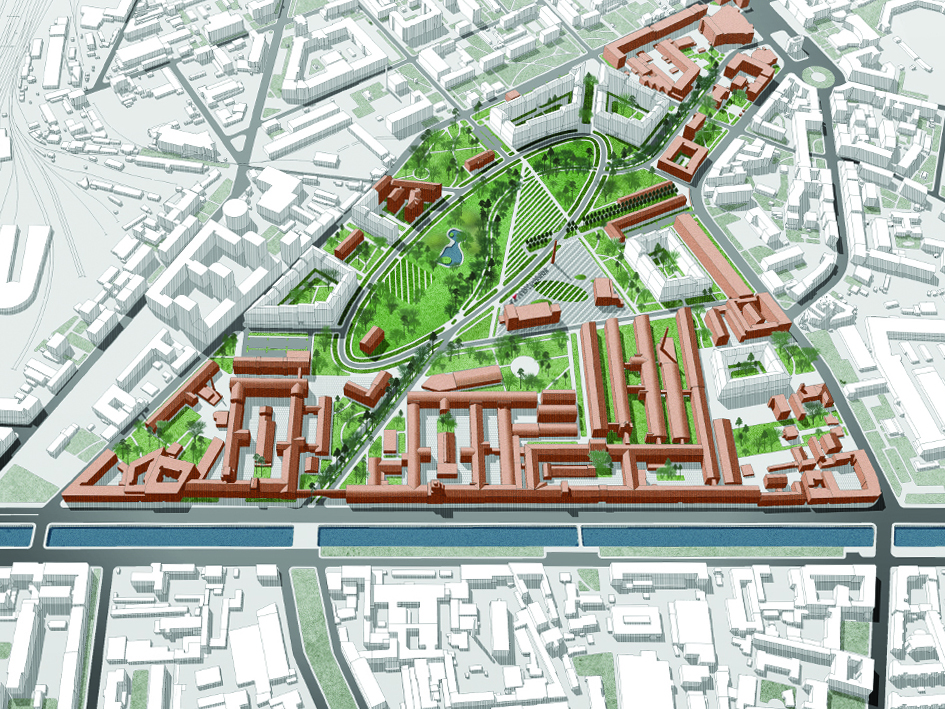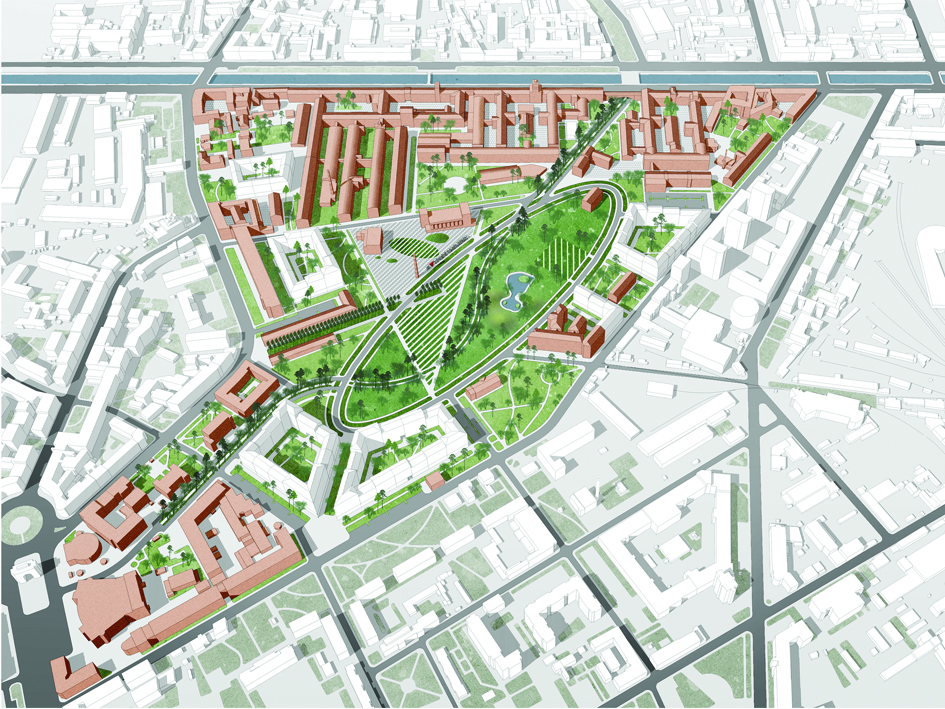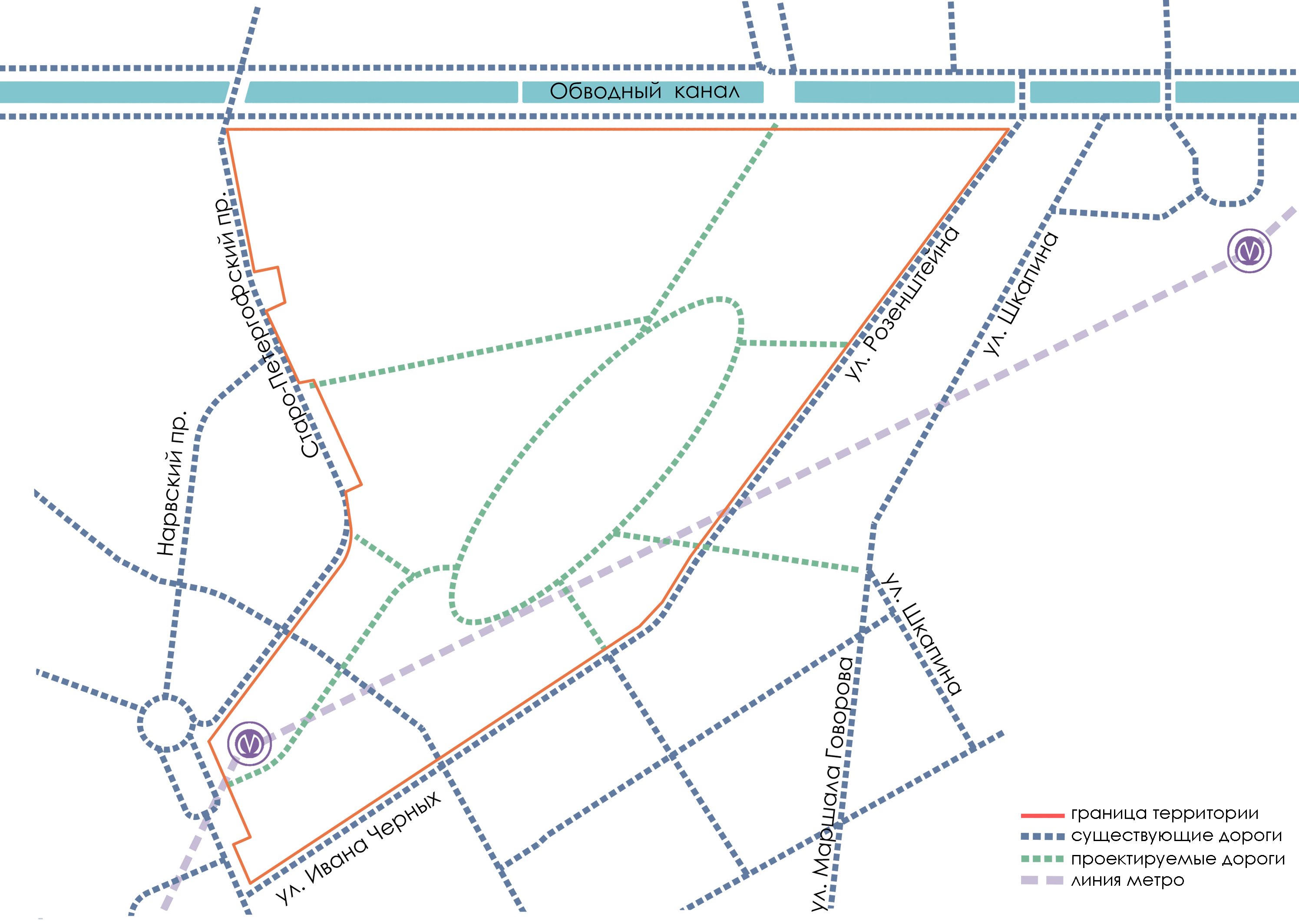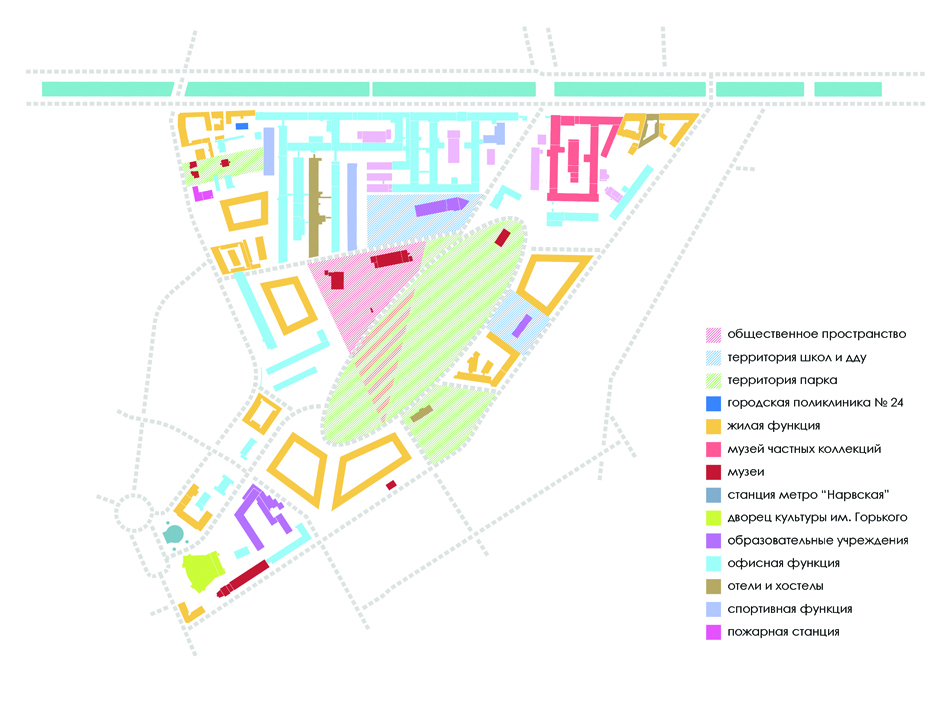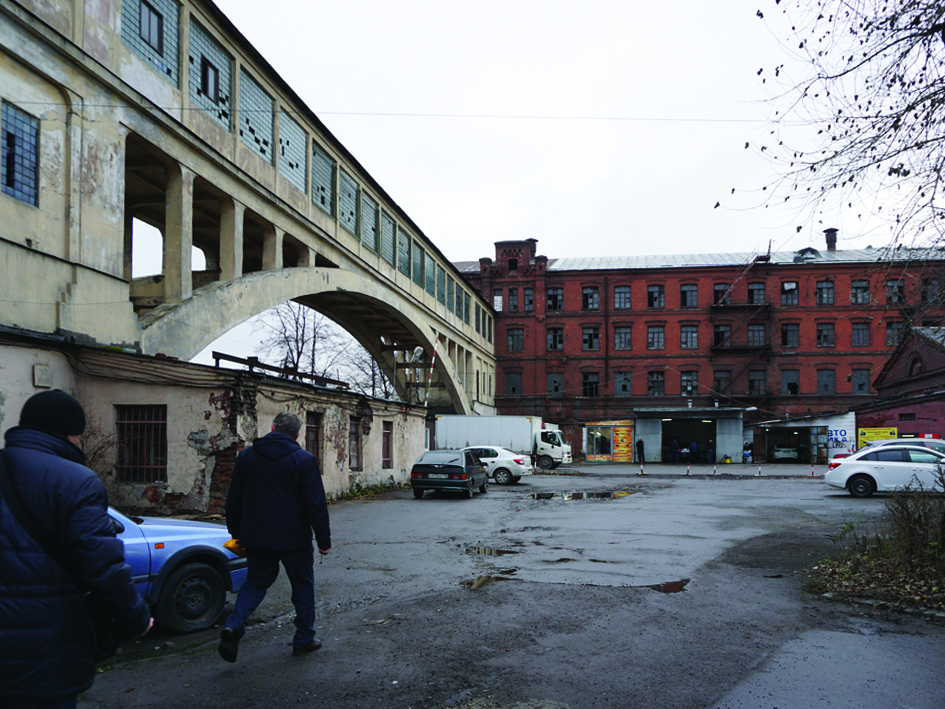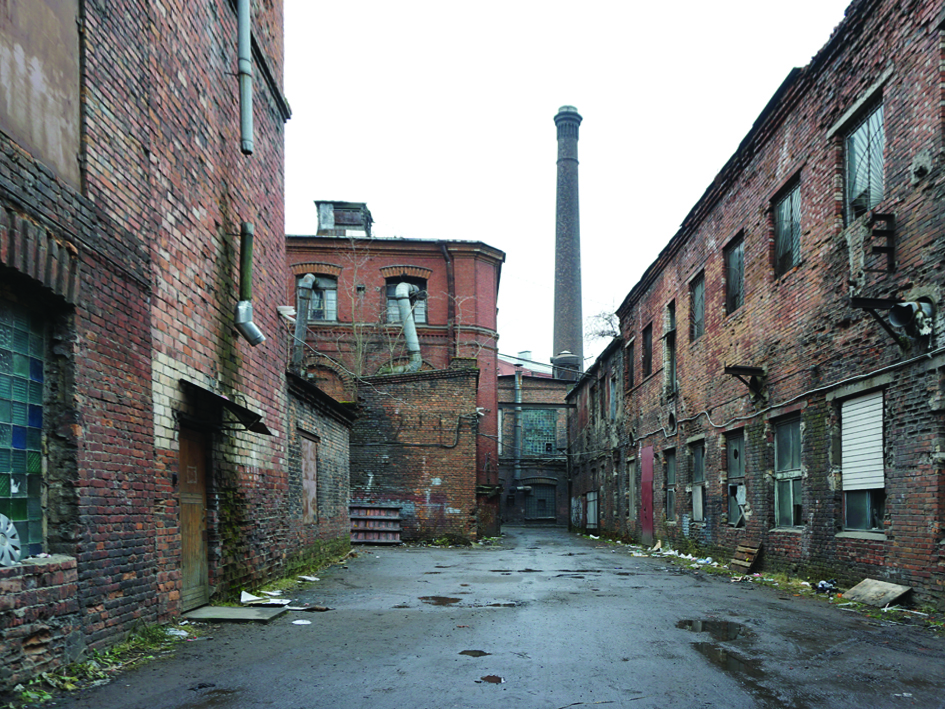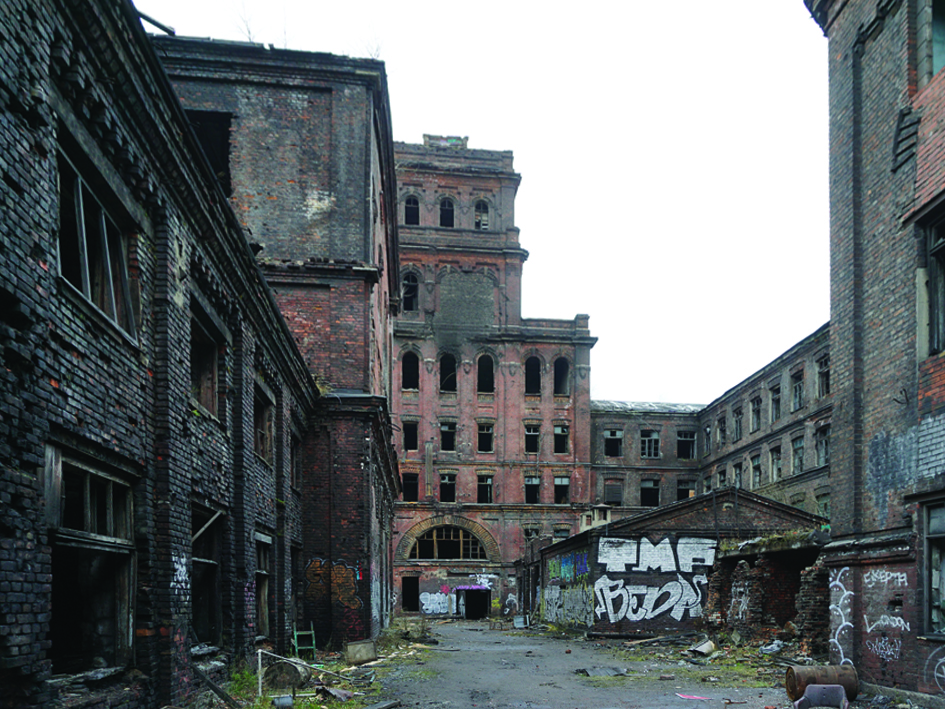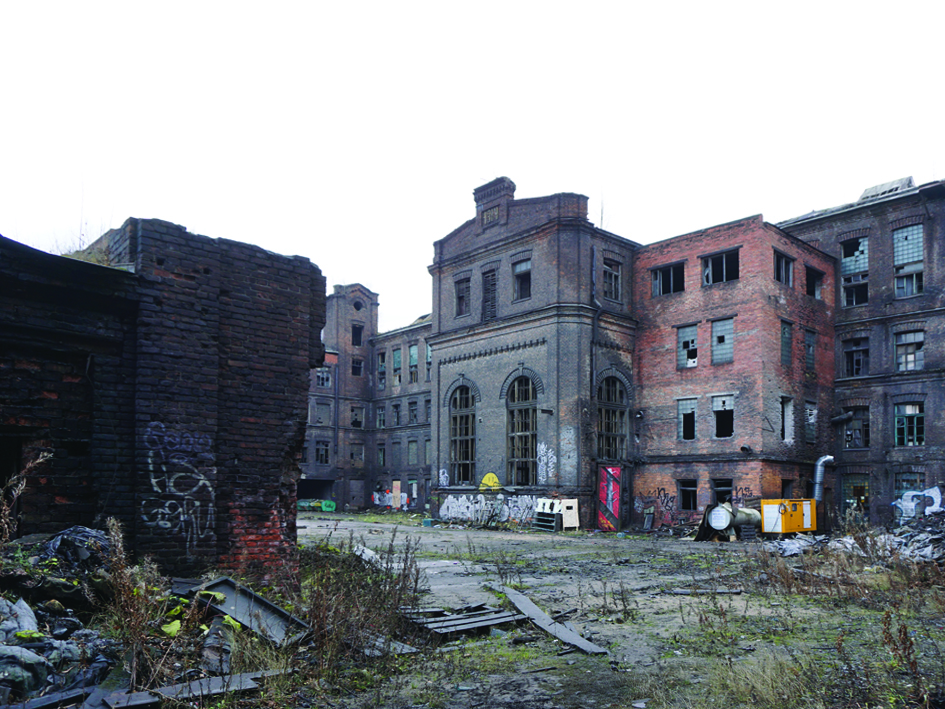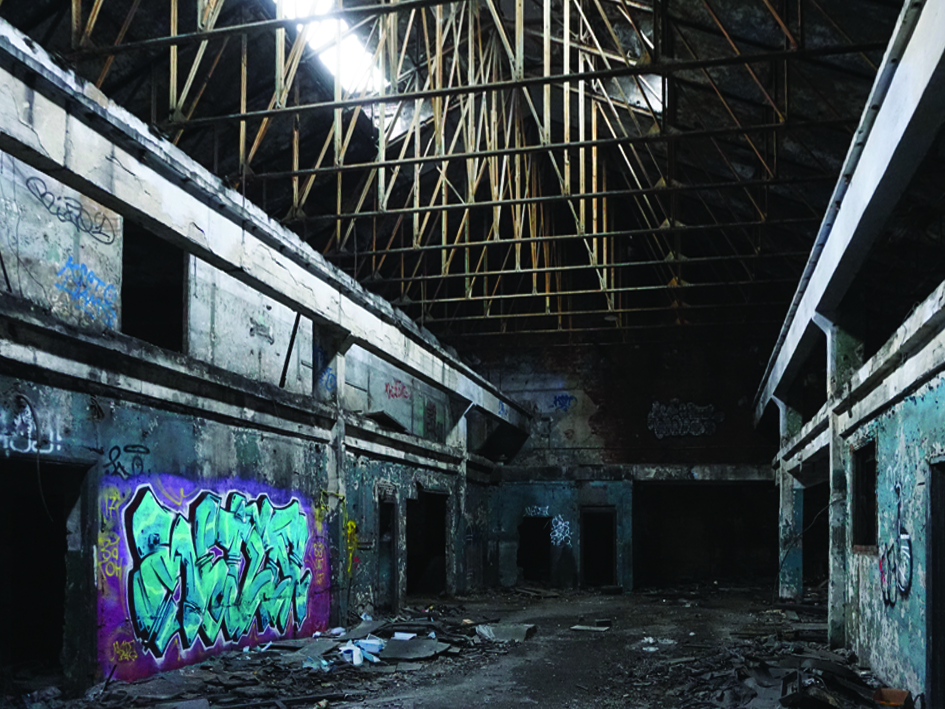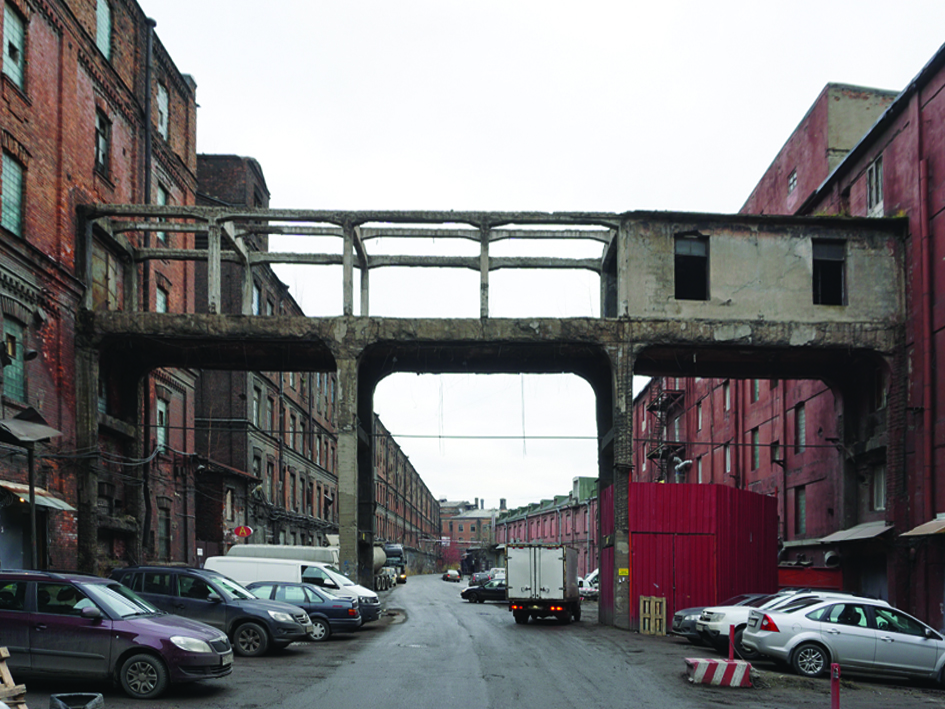The main task of the project was to create an attractive and convenient space with a smart layout structure and a distinctive style emerging under the influence of the historical buildings.
The buildings of the Treugolnik (Triangle) Russian-American Rubber Manufacture Association constructed on the southern bank of the Obvodny Canal in the second half of the 19th century have contributed to the architectural image of this area of Saint Petersburg. Massive red-brick buildings occupy the part of the Obvodny Canal between the Rozenshteina (former Leikhtenbergskaya) street and the Staro-Petergofskoe highway. The line of these structures is broken by water towers and an archway connecting two buildings at the point where the Tarakanovka river used to flow in the beginning of the 20th century. The complex having invoked its own chapter of Saint Petersburg industrial history, its scale and grandeur are still striking.
The manufacture complex was developing from 1860 to 1910. Its authors include famous Saint Petersburg architects such as R. R. Henriksen, R. A. Gödike, E. G. Yurgens, E. I. Hellman, civil engineers E. A. Krzhizhanovsky, L. A. Serk, to name a few. A unique architectural environment emerged at the site with its inner streets, chimneys, metal ladders, and passageways. The manufacture also influenced the developing social structure of the neighbourhood: residential houses for the factory workers, a school, a hospital, a club, and some shops emerged nearby.
Today, the vast territory of the former industrial giant lacks uniformity. Some buildings have been renovated by the lessees, while others stay empty with windows broken and plaster falling from the ceilings, and the road pavement contains cracks and huge pits. It may be dangerous to wander through the Treugolnik even in the daytime.
Despite a great amount of legal and semi-legal renters, the territory has long become a negative centre of attraction in the neighbourhood. Still, it has a huge potential, and we think that the Treugolnik deserves a clever and cautious rethinking of the part it plays in the vivid urban tissue, so that the former industrial area could revive and the former Krasny Treugolnik plant site together with the surrounding blocks become a comfortable and flourishing place attracting residents.
The project provides for the preservation of cultural heritage objects: the Treugolnik Russian-American Rubber Manufacture Association complex (80 manufacturing buildings connected by passageways), as well as the Duke of Leuchtenberg galvanoplastic plant complex (2 manufacturing buildings with a stone fence). The project provides for a restoration of the heritage objects: the façades are to acquire their original appearance, the damages are to be made up for, brick «patches» eliminated, closed openings reopened, discordant add-ons of soviet times removed.
The analysis of the site has revealed other buildings that we consider valuable and requiring preservation. Structures of no historical or aesthetic significance are to be demolished. All the to-be-preserved buildings capture the «genius loci», give a unique scent to the place, and build up the site’s historical and cultural significance.
We suggest the preserved buildings be restored and reconstructed in a delicate manner and acquire new functions according to the needs of the neighbourhood residents and of the city as a whole. Some buildings are to be occupied by public and commercial facilities, others will accommodate social services facilities, kindergartens, and schools.
The main task of the project is to create an attractive and convenient space with a smart layout structure and a distinctive style emerging under the influence of the historical buildings, while introducing new residential spaces to enhance new residential development which now only exists fragmentarily in the development area. We consider it necessary to introduce residential spaces into the Treugolnik development site. It is a reasonable urban planning move which would allow both to fixate the main streets shaping the territory (Staro-Petergofsky highway and Rozenshteina street) and to provide for life to go on at the site 24 hours a day. Nowadays, during the non-working hours the area becomes deserted, and one feels uncomfortable walking Rozenshteina street and Staro-Petergofsky highway along the Treugolnik. The reason is not only that the territory is mainly made up by offices, but also that the development is non-homogenous and includes some void spaces.
A geometrical pictogram underlies the design. The composition may seem influenced by Suprematism at the first glance, but it is made up of elements real and precisely adjusted, each one introduced and located in its particular place for a purpose.
The Krasny Treugolnik site development project allows to revitalise the territory and to transform a depressive area into a centre of attraction for the public life, into a festival, concert, cinema and theatrical shows venue, etc. This would bring together the best of creative force of the Russian Northern Capital and create a brand-new environment attractive to the general public.



